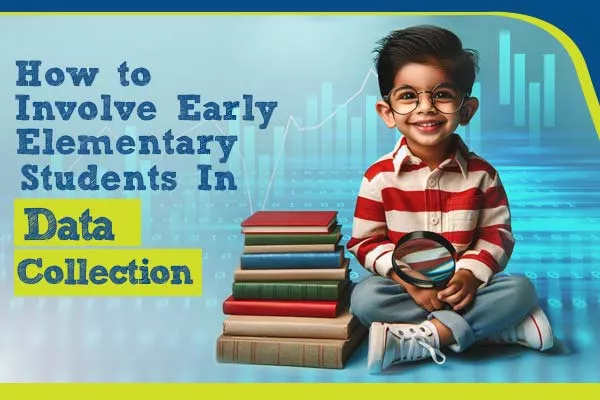Category: Recommendation

In the dynamics of school learning, collecting data refers to gathering information that helps teachers and students make good choices and have more fun learning. Imagine using pictures and numbers to create colorful charts that show what we've learned! Today, we're going to share seven cool tips to make learning about data easy and super fun. Let's dive in and discover how we can turn data collection into an enjoyable adventure for all the early elementary kids out there!
Getting kids involved in collecting data can be a lot of fun! Imagine counting toys or finding out what sports their friends like. It's like turning everyday things into cool activities. We use pictures and numbers to make it easier, and we can even create colorful charts to show what we've learned. Let's explore seven practical tips on how we can make learning about data super interesting and easy for early elementary kids:
Initiate conversations with students about their progress. You can encourage them to analyze data and choose one SMART goal they are interested in tracking. Provide a scaffold or a list of options if needed. Start with one goal to avoid overwhelming young learners.
Establish a designated area, such as individual data folders, where students can visually track their goals without feeling pressured to share with others. Schedule regular data meetings, either one-on-one or in small groups, to discuss progress or conduct reassessments. Keep the sessions short and focused.
Introduce a digital calendar to help students anticipate and count down to their next progress-monitoring session. This not only prepares them for upcoming assessments but also reinforces authentic calendar skills as they learn to identify the time remaining before the next check-in.
Foster a positive atmosphere by celebrating successes. Acknowledge students' hard work and accomplishments toward their goals. Send postcards home to families when goals are met, creating a bridge for communication between home and school. This tangible recognition also builds excitement as students await the arrival of their postcards.
Include goal-sharing as a key component of student-led conferences. Equip students with the language to discuss their progress and future goals. Practice creating agendas, using sentence starters, and rehearsing with peers before presenting to families. This practice empowers students to articulate their achievements confidently.
Make data meetings effective and meaningful by focusing on individual or small group discussions during goal-setting sessions. Use this time to guide students in reflecting on their progress, providing support where needed, and planning for future steps in their learning journey.
Foster a sense of community by encouraging peer support and collaboration. Students can share their goals with classmates, providing an opportunity for mutual encouragement. Consider collaborative activities where students work together to achieve common objectives, creating a supportive learning environment.
Embrace progress as a Journey: Shift your mindset from viewing assessments as tasks to seeing them as opportunities for valuable conversations with students. Teaching goal-setting is as crucial as academic skills, fostering resilience and self-awareness. By transforming how we collect data, we not only monitor progress with joy but also empower students to be advocates in their learning adventures. As Helen Keller once said, "Optimism is the faith that leads to achievement. Nothing can be done without hope and confidence." Let's inspire hope and confidence in every step of this educational journey!
 Blog: Recently Added
Blog: Recently AddedSearching for an ideal early learning institution in a busy metropolitan city can indeed seem challe...
The education system in India is going through a dramatic transformative process. The traditional ch...
The Indian education system is going through massive changes. In the past, success in academics was...
The education of children born after 2010, commonly known by the name of Gen Alpha students--is...
Recent years have seen the academic standard in India has gone beyond simply scoring high on board e...
The choice of the ideal school is among the most significant parental decisions that affect their ch...
Sending a child to school is one of the most important and stressful activities a parent must do in...
Selecting the best school for your child is among the most significant choices parents can make for...
Choosing a good school is one of the toughest choices that a parent has to make, and now this entire...
Admission to school has grown into one of the major events in the child's young childhood. Parents l...

